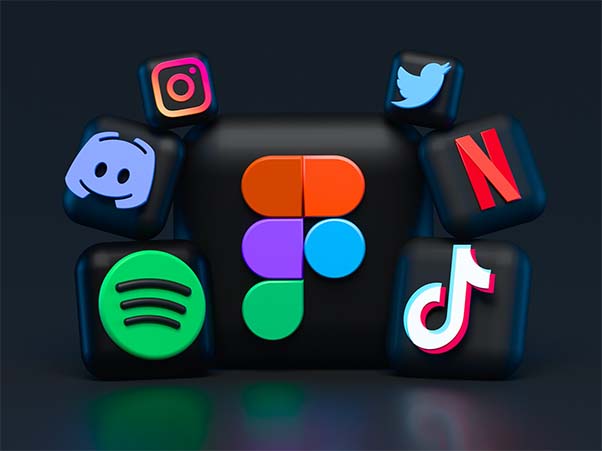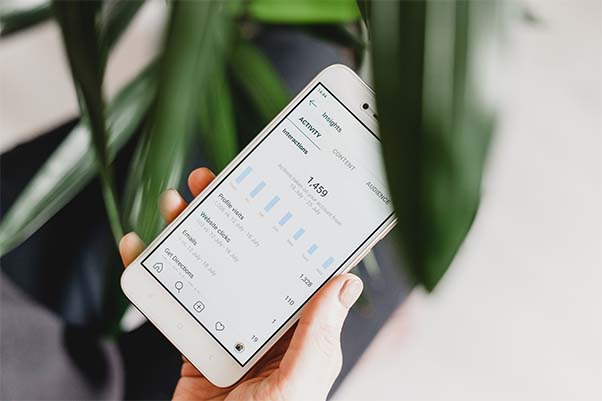How to Use Social Media for Ecommerce Growth
Social media platforms have become incredibly important for ecommerce businesses. Whether you just want to strengthen your brand or set up sales funnels directly on your Facebook or Instagram profiles, social media is a powerful tool you shouldn’t miss out on.

In fact, 60% of Instagram users discover new products through the platform, so its ecommerce potential is enormous.
The use of social media for ecommerce has evolved in recent years, and there are many ways to use the platforms to grow your business. Here are the best ones that are guaranteed to bring you success.
Decide on the Social Media Channels You Want to Use
Your choice of social media channel will primarily depend on what kind of product you’re selling, who you want to target, and the features the platform has to offer. For example, if you’re a clothes store, Instagram and Pinterest might be of interest to you since they’re mostly image-oriented, and you can present your products in a simple and effective way.
Tracking any mentions of and discussions about your brand, products, industry, and competition is called social listening.
Who you want to target is also essential since preaching to the wrong crowd won’t get you anywhere. For instance, if your goal is to reach young people, you may want to try TikTok since 60% of its users are members of Generation Z. Researching the primary demographic of each platform will help you determine which one will be most effective in helping you reach your objectives.
Finally, most platforms offer some unique features that set them apart from the others. Facebook might be the most versatile in this respect, and it has the largest user base, so it’s always a safe bet.
Build the Buzz
Before you can start using social media for ecommerce growth, you need to establish a strong presence and build a following. In other words, you need to get noticed. If you want to achieve this organically, it might take a bit of time, but it will be worth the wait.
The best way to do so is to post relevant content regularly so that you always stay on the radar of potential customers. Ecommerce SEO specialists attest to the power of great content in driving significant traffic in a short time. For example, this SEO case study relied on a variety of SEO tweaks to boost the site’s traffic, but it was the addition of quality content that did the trick.
Furthermore, optimise your account and provide all the relevant info. You should also use keywords and hashtags to draw the attention of potential buyers and further amplify visibility.

Use Social Media Ads
If you want to speed up the process or not rely only on organic reach, you should utilise social media advertising. Ads on various platforms can get you far in a short time and help you target your audience precisely. Most major social media networks offer great advertising options, and it’s best to use the ones where you’ve already acquired some followers.
Most advertising toolkits allow you to start broadly by choosing your advertising objective. In this way you can choose to work on building brand awareness, sending traffic to your site, increasing leads, etc.
Facebook offers the most advanced tools, and it provides a variety of targeting options, which can help you focus your campaign where you want it.
Ads used to have a somewhat bad rap in digital marketing, but people are becoming more and more receptive to them. In fact, their impressions increase by 20% each year, which attests to their effectiveness.
Social Commerce
However, as an ecommerce store, you can use these platforms for more than just marketing — you can sell your products on them directly. This option is known as social commerce, and it allows you to “set up shop” on your account.
Unfortunately, this native shopping feature is still not available across all networks. For now, you can use it on Instagram, Facebook, and Pinterest. You can set up an entire sales channel on social media, from browsing to completing a purchase. This is especially great for items a shopper can evaluate and decide to buy at a glance.
There’s also an option of providing a link for completing a purchase off-platform. For example, Instagram has shoppable posts, which are product images containing a product tag. By clicking on it, a customer is led to the main site for purchase.
An interesting emerging feature on social networks is livestream shopping, where a host presents a product through a live video.
Social Listening
Great impressions circulate fast, but bad ones spread like wildfire. That’s why you always need to keep an ear out for what people are saying about your brand online. Tracking any mentions of and discussions about your brand, products, industry, and competition is called social listening.
You can learn a lot just by listening to what customers have to say and how your competition is handling their social media marketing efforts. This way, you can find out what products get the most love from buyers, what your strengths and weaknesses are, and the general sentiment about your brand.
You will also find out what kinds of words people tend to use when they talk about your brand and your industry and incorporate them in your marketing efforts.

Social Proof
Social media users trust other users more than they trust you in describing your brand. That’s why accumulating social proof is a fantastic strategy to garner more positive attention online. Social proof is any positive feedback, opinion, and comment about your products, and you don’t have to wait for it to come on its own — you can encourage it!
One way to get social proof is to utilise influencer marketing, i.e., get a local influencer to promote your product. You can also collaborate with experts on educational or informative social media events and gain more credibility.
There are many ways to get mentions on social media, but probably the best and most effective one is curating user-generated content. You can do so by encouraging customers to use branded hashtags or even share their posts.
The potential of social media for growing your ecommerce business is huge, and you can experiment with various options.
